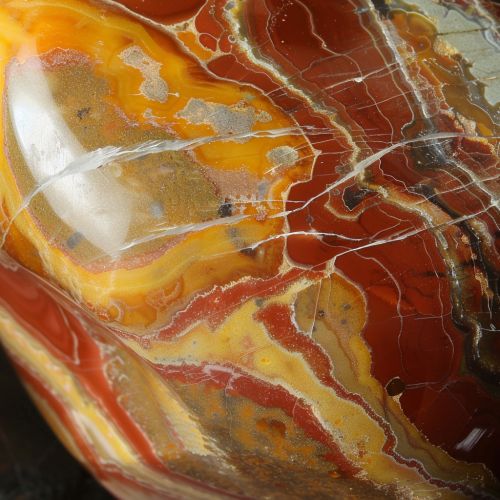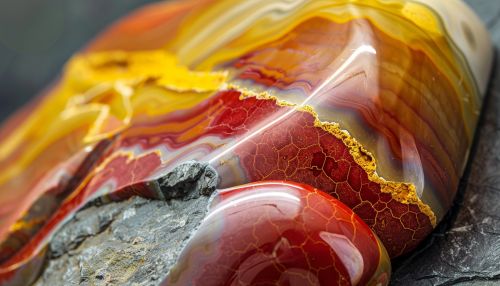Jasper
Overview
Jasper is a variety of quartz, a common mineral found in the Earth's crust. It is a microcrystalline form of quartz and is typically red, yellow, brown, or green in color. Jasper is opaque, which distinguishes it from other forms of quartz that are transparent or translucent. It has a hardness of 6.5 to 7 on the Mohs scale, making it a durable material for various uses.


Formation and Composition
Jasper forms from the precipitation of silica in various types of sediment, including clay, silt, and sand. The silica comes from the weathering of silicate rocks, and it forms a gel that fills in the spaces between the grains of sediment. Over time, this gel hardens into the microcrystalline quartz that makes up jasper. The different colors of jasper are due to various mineral impurities in the silica gel, such as iron oxides (which produce red and yellow colors) and chlorite (which produces green colors).
Types of Jasper
There are many different types of jasper, each with its unique color patterns and mineral inclusions. Some of the most well-known types include:
- Red Jasper: This type of jasper is characterized by its deep red color, which is due to the presence of iron oxides. Red jasper often has streaks or spots of other colors, such as black or white.
- Yellow Jasper: Yellow jasper has a bright yellow color that can range from pale to golden. It is often mottled with brown or green spots.
- Green Jasper: Green jasper is typically dark green and may have black or white streaks. The green color is due to the presence of chlorite or other green minerals.
- Picture Jasper: This type of jasper is named for its intricate patterns that often resemble landscapes. Picture jasper can be a variety of colors, including brown, tan, and gray.
- Dalmatian Jasper: Named for its resemblance to the coat of a Dalmatian dog, this type of jasper is white or light gray with black spots.
Uses of Jasper
Jasper has been used for thousands of years for various purposes, thanks to its hardness and beauty. Some of the most common uses of jasper include:
- Gemstones and Jewelry: Jasper is often cut and polished into cabochons for use in jewelry. It is also carved into beads, pendants, and other decorative items.
- Ornamental Stones: Larger pieces of jasper are often polished and used as ornamental stones, such as bookends, paperweights, or decorative objects.
- Lapidary Art: Jasper is a popular material for lapidary art, which involves the cutting, shaping, and polishing of stones. Artists often take advantage of the unique color patterns in jasper to create beautiful works of art.
- Archaeological Artifacts: In the past, jasper was often used to make tools and weapons, such as arrowheads and knives. These artifacts are often found at archaeological sites.
